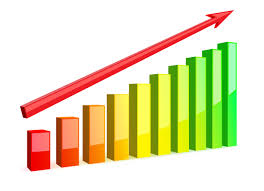‘RESULTS – The Dynamic Duo of Measures’
‘RESULTS – The Dynamic Duo of Measures’
Well, we’re already heading toward the end of the 1st quarter – and if you’re like me, you’re close to determining if you’re going to achieve the results you wanted (which imply what you have to do to make your year-end goals).
 Achieving results is a function of many things however the truism of “You get what you measure/what you measure is what you get” stands the test of time. In fact an organization’s measurement system strongly affects the behavior of managers and employees. Senior executives cannot rely on one set of measures to the exclusion of others. And no single measure can provide a clear performance target or focus attention on the critical areas of the business.
Achieving results is a function of many things however the truism of “You get what you measure/what you measure is what you get” stands the test of time. In fact an organization’s measurement system strongly affects the behavior of managers and employees. Senior executives cannot rely on one set of measures to the exclusion of others. And no single measure can provide a clear performance target or focus attention on the critical areas of the business.
This brings me to balanced performance measures to really achieve your desired results. Any successful strategy and implementation has a mix of both lagging and leading measures of performance. Too often only lagging indicators/measures are tracked, and when results come in below forecast there’s little way to determine the actual processes or activities that got you there. So what’s the difference?
Lagging Performance Measures
- Are outcomes measures, they represent the consequences of actions previously taken
- Focus on results at the end of a time period, normally characterizing historical performance
- Answer “how well are we doing now due to actions taken in the past?”
- Normally easy to identify and capture e.g. market share, sales, employee satisfaction, ROI, etc.
Leading Performance Measures
- Are driving measures to achieve the outcomes measures
- Drive or lead to the performance of the lag measures, normally measuring intermediate processes and activities
- Answer “how well are we likely to do in the future, given the actions we are taking today?”
- Predictive in nature, should predict performance of lagging measures and allow the organization to make adjustments based on results e.g. hours spent with customers, proposals submitted, pipeline growth, time bringing new products to market, % of deliveries meeting customer’s date, etc.

The distinction between lagging and leading measures is your starting point (looking back and looking ahead). Lagging indicators without performance drivers fail to inform us of how we hope to achieve our results. Conversely, leading indicators may signal key improvements throughout the organization, but on their own they do not reveal whether these improvements are leading to improved stakeholder and financial results (which are outcomes). Leading indicators set you apart by identifying the specific activities and processes you believe are critical to driving those lagging indicators of success.
Time for a quick check – do you have in place the leading indicators (specific activities and processes) to drive the achievement of your lagging indicators/results you want to achieve? Even if you’re on course to achieve your 1st quarter results, can you answer what you did to achieve those results? If you can, and they’re tracked, your chances of repeating your success throughout the rest of year and next are looking pretty great!
Check out the website, and see how you can learn more and integrate it into your leadership.
Next month I look forward to sharing the S. of the L.E.A.D.E.R.S.H.I.P. series – ‘Self-Knowledge’
~ Victoria Raymont





Comments are closed.